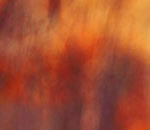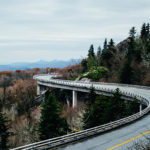Today we bring you a stunning 360° timelapse over the night skies of the Paranal Observatory in the Atacama desert in Chile. This beautiful HD timelapse shows the other side of the Milky Way “rising and setting”. The fisheye perspective gives you a full view of the sky and I highly recommend watching this video in HD and fullscreen:
Doing the Math
If you want to do a night sky timelapse of your own, you’re going to have to do a little math. Here are a few equations to help you out:
The 500 Rule
The 500 rule is a guide for avoiding star streaks in your photos. To ensure sharp starry night photos, simply take 500 and divide by the focal length of your lens. This will give you the maximum shutter speed that you can use without seeing star streaks across your image. So, for example, if you have a 24mm lens, 500/24 = 21 seconds. This means any photo you take that’s 21 seconds or less will appear sharp. Remember to factor in your camera’s crop ratio. If you have a 1.5x crop sensor, you’ll need to convert it to its full frame equivalent.
Figuring Out Framerates
You’ll need to figure out how many photos you need to take and at what frequency. This will depend on how long you shoot for and how long you want your video to be. So let’s say you’ll be shooting for 6 hours to be condensed into 3 minutes. There are two standard frame rates: 24fps and 30fps, but we’ll go with 30 just to make the math easier. So to break it down, you want a 3 minute video which is 180 seconds. Showing the video at a standard 30 photos per second, this means you’ll need to take 5,400 photos. (That’s a lot of photos.) Now, you have 6 hours to shoot, which is 360 minutes. So 5,400 photos divided by 360 minutes equals 15 photos per minute (Via Slate & Petapixel)

The other side of the Milky Way
Like This Article?
Don't Miss The Next One!
Join over 100,000 photographers of all experience levels who receive our free photography tips and articles to stay current:






Leave a Reply